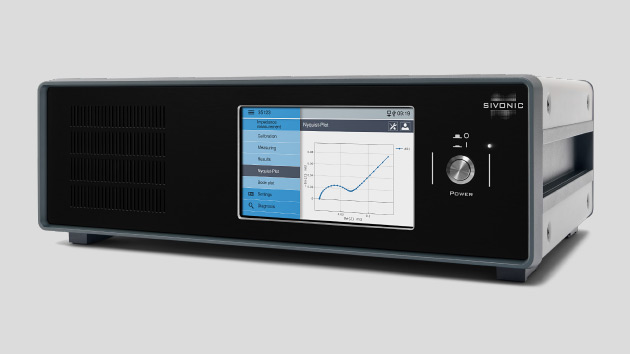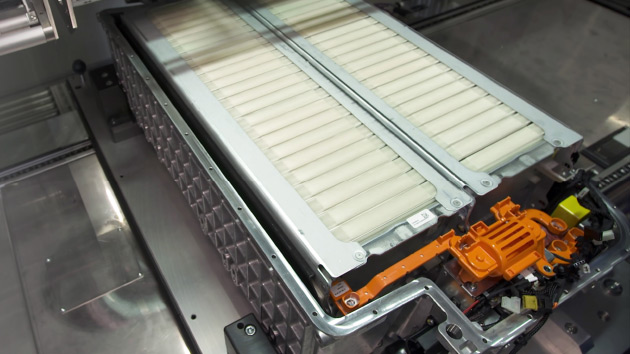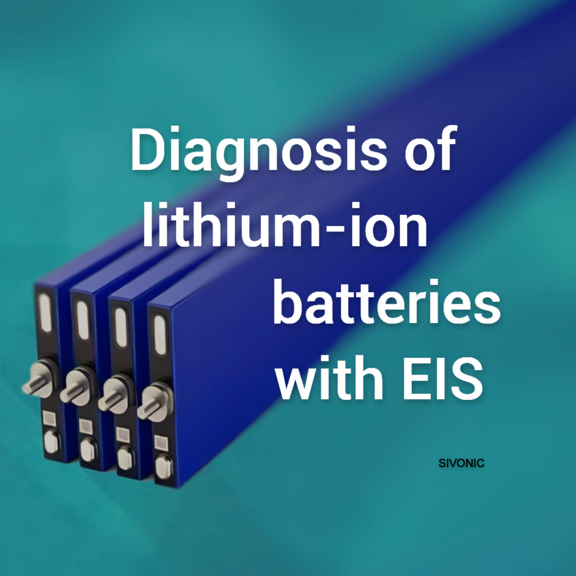Diagnosis and Optimization of Lithium-Ion Batteries Using Electrochemical Impedance Spectroscopy
Lithium-ion batteries are currently the leading energy storage technology for both mobile and stationary applications. They are used in electric vehicles, smartphones, and numerous other electronic devices. Despite their high energy density and long service life, they are subject to a natural aging process that gradually reduces their capacity and performance.
To better understand these degradation mechanisms and improve battery performance in a targeted way, electrochemical impedance spectroscopy (EIS) has emerged as one of the most powerful analytical tools. This non-invasive method allows for precise analysis of the internal electrochemical processes of a battery without damaging the cell. By evaluating impedance across a wide frequency range, EIS provides detailed insights into the condition of the electrodes, the electrolyte, and ion diffusion within the cell.
The following text outlines the structure of a lithium-ion cell, introduces the fundamentals of EIS, analyzes key factors influencing cell aging, and explains how these are reflected in the electrochemical spectrum.
Structure of a Lithium-Ion Cell
A lithium-ion cell is composed of several essential components that work together to convert chemical energy into electrical energy. The cathode (positive electrode) typically consists of lithium metal oxides such as lithium cobalt oxide (LiCoO₂), lithium nickel manganese cobalt oxide (NMC), or lithium iron phosphate (LiFePO₄). The anode (negative electrode) is usually made of graphite or other carbon-based materials.
Between the electrodes is the separator – a thin, porous membrane that prevents physical contact between the electrodes to avoid short circuits while allowing lithium ions to pass through. The electrolyte, composed of organic solvents with dissolved lithium salts, facilitates charge transport between anode and cathode. During the first charge cycles, the solid electrolyte interphase (SEI) forms on the anode – a thin passivation layer that stabilizes the electrode and prevents unwanted side reactions.
The performance, safety, and lifespan of a battery are largely determined by the composition and interaction of these components. This is where the EIS method comes into play: by measuring internal electrochemical processes with high precision, EIS supports material improvements, early detection of degradation, and more efficient cell design.
Fundamentals of Electrochemical Impedance Spectroscopy (EIS)
Electrochemical impedance spectroscopy is a powerful, non-destructive technique for analyzing the dynamic behavior of battery cells. It measures the cell’s response to a small alternating current signal across a broad frequency range – from high frequencies down to the microhertz range.
Results are typically presented in a Nyquist plot, where different resistance and capacitance components of the cell can be identified and interpreted. EIS helps assess critical electrochemical parameters such as charge transfer resistance, lithium-ion diffusion, and electrolyte resistance. These precise diagnostic data are vital for the development of new materials and the optimization of charging and operating strategies for longer-lasting batteries.
The SIVONIC EIS meter is optimized for the analysis of battery cells, battery modules and battery packs.
Factors Contributing to Battery Aging
The aging of lithium-ion batteries is influenced by a variety of physicochemical processes:
Electrode materials: Changes in structure or composition of the electrodes can lead to performance loss.
SEI layer: An unstable or excessively growing SEI can hinder ion transport and reduce battery capacity.
Electrolyte stability: Decomposition of the electrolyte can cause unwanted deposits on electrode surfaces.
Separator quality: Its thermal resistance and pore structure determine the effectiveness of ion conduction and safety.
Operating conditions: High temperatures, frequent cycling, or rapid charging accelerate aging.
EIS can make these processes visible by detecting changes in impedance values. This enables early identification of aging effects and provides a foundation for targeted battery optimization.
Identifying Aging Signatures in the EIS Spectrum
Specific aging mechanisms can be associated with characteristic frequency ranges in the EIS spectrum:
High-frequency range: The ohmic resistance, primarily determined by the electrolyte, may increase due to composition changes.
Mid-frequency range: The semicircle in the Nyquist plot represents the charge transfer resistance. A larger diameter indicates electrode degradation or SEI growth.
Low-frequency range: The Warburg impedance reflects lithium-ion diffusion within the electrodes. A change in slope or a broader Warburg region suggests structural changes or reduced ion mobility.
Accurate identification of these changes enables detailed aging analysis and supports early intervention for performance optimization.
Outlook and Relevance for Battery Development
Electrochemical impedance spectroscopy has become an essential tool for the development of safe and durable lithium-ion batteries. It not only enables the early detection of aging processes but also provides a solid foundation for targeted improvements in materials and cell design.
Research is increasingly focused on leveraging EIS to enhance the efficiency of modern battery systems. Regulatory frameworks such as the EU Battery Regulation 2023/1542 also emphasize the importance of advanced diagnostic methods. In the future, new analytical approaches, improved materials, and optimized charging protocols could significantly extend the service life and safety of lithium-ion batteries – a crucial step forward for electric vehicles, stationary storage systems, and portable electronics.



